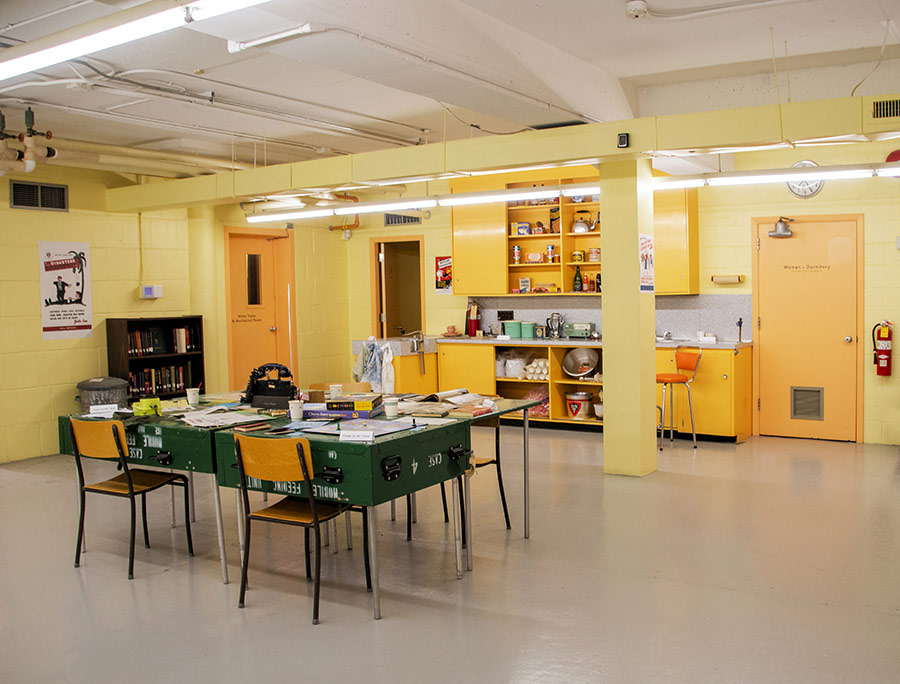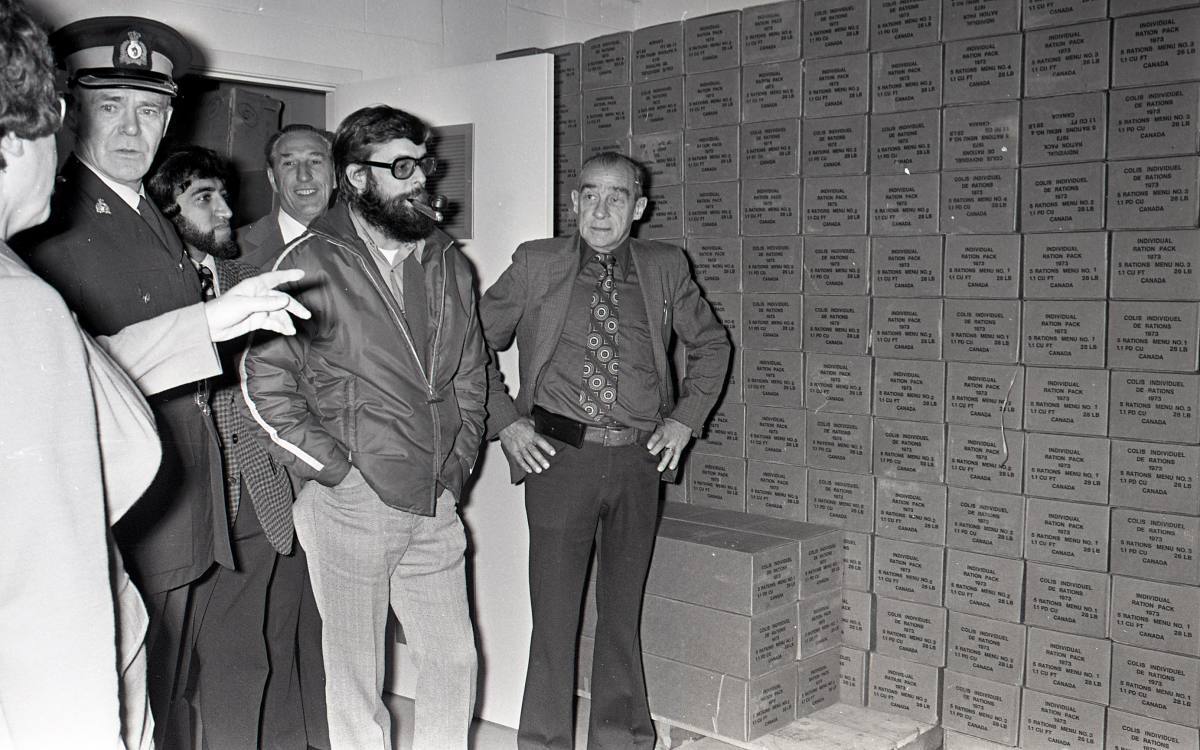It has a generator, three enormous water tanks, decontamination showers and a colour scheme straight out of the 1960s.
Dormitories filled with bunk beds would have sheltered the mayor, firefighters, doctors, radio broadcasters and other townsfolk — mostly men, and almost exclusively white — who had been selected to go down into a bunker built beneath the post office of a small B.C. town in the event of a nuclear attack.
For decades, the Cold War bunker in Nelson, B.C. sat forgotten underneath an unassuming brick building on Vernon Street. But in 2013, the town’s museum moved into the old city hall building, right beside the bunker. Alan Ramsden, a museum board member who had been on the list to go down to the bunker in the 1960s, started talking to staff about the strange piece of history that lay right under their feet.
“It was a bit of a discovery,” said Jean-Philippe Stienne, an archivist and collections manager at Touchstones Nelson Museum of Art and History.
“It had sort of been forgotten about. It was a secret initially, but it had really been abandoned and used for a little bit of storage.”
After restoring the Cold War bunker, the museum opened the space to the public. It is now open every Saturday from noon to 4 p.m.
Bunkers are having a moment: stories about newly built “luxury” bunkers and repurposed Cold War shelters have been popping up in news media since 2016, when the election of Donald Trump seemed to spur an increase of interest in preparing for the worst. The swiftly advancing effects of climate change, the COVID-19 pandemic and now the war in Ukraine — along with the renewed threat of nuclear weapons — have only heightened the anxiety around doomsday scenarios.
The Cold War bunker in Nelson was one of a network of shelters created by the federal government in the 1950s and ’60s in response to nuclear weapon proliferation by the Soviet Union and the United States. Canada, allied with the U.S., was right in the middle.

“The theory was that missiles could possibly be coming over the Arctic Circle and hitting targets in Canada,” said Stienne.
Then-prime minister John Diefenbaker spearheaded the effort to prepare Canada for nuclear war. The “Diefenbunker,” an underground four-storey structure located in Carp, Ontario, was designed to shelter top politicians and government officials so the Canadian government could continue to “operate safely underground for 30 days in order to assist with the governance and rebuilding of the country.” Today, the Diefenbunker is a museum.
There are no Cold War bunkers in Vancouver, Montreal or Toronto. Small towns were chosen as the location for the regional shelters because large cities were considered to be main targets of a possible missile attack. In B.C., Cold War bunkers were also built in Nanaimo and Kamloops.
“The hope was that that would not be directly hit, although of course there would be fallout from the radiation,” Stienne said. “But there was hope that people could survive the initial attack and maybe have more chance of getting to the bunker.”
On the Nanaimo Cenotaph and Nanaimo Virtual Military Museum Facebook page, a post notes that city’s “secret underground bunker” cost approximately $2 million to build in the late 1950s, and was demolished in 1999.
In Kamloops, there are actually 22 naval bunkers that were constructed during the Second World War. They are now disguised amid the landscape. Tours are sometimes offered around Remembrance Day.
Getting a look at an actual Cold War bunker illustrates their limitations, Stienne said, and raises questions about whether it’s possible to try to wait out an environmental disaster underground.
In Nelson, the 70 people designated to go down to the bunker got special training, but they were expected to leave their families behind. Initially, museum staff assumed the bunker dwellers anticipated a months-long stay in the shelter, but as they did more research they discovered the bunker was only equipped with enough food and water to last around two weeks.
“It depends how it would have played out, but it's debatable how effective it would have been,” Stienne said. ![]()
Read more: Politics, Urban Planning + Architecture
















Tyee Commenting Guidelines
Comments that violate guidelines risk being deleted, and violations may result in a temporary or permanent user ban. Maintain the spirit of good conversation to stay in the discussion.
*Please note The Tyee is not a forum for spreading misinformation about COVID-19, denying its existence or minimizing its risk to public health.
Do:
Do not: